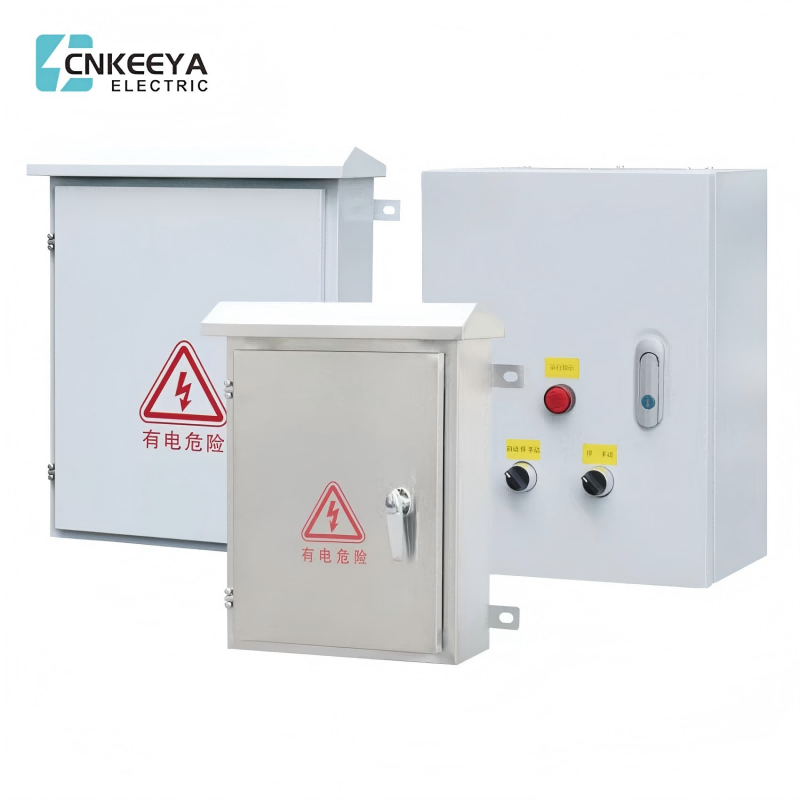What Is the Function of a Circuit Breaker in Low Voltage Switchgear
2025-10-23
When we talk about the core components of any electrical distribution system, the Low Voltage Switchgear stands out as a critical assembly. At the heart of this assembly lies a vital guardian: the circuit breaker. But what exactly is its role? Simply put, the circuit breaker is an automatically operated electrical switch designed to protect an electrical circuit from damage caused by overcurrent or a short circuit. Its fundamental function is to interrupt current flow—to "break" the circuit—once a fault is detected. This is not just a safety feature; it is the cornerstone of operational reliability for the entire Low Voltage Switchgear system.
Within a CNKEEYA Low Voltage Switchgear, the circuit breaker’s operation is precision-engineered. It continuously monitors the current flowing through the circuit. Under normal conditions, the contacts within the breaker remain closed, allowing uninterrupted power flow. However, when a fault condition—such as an overload or a short circuit—occurs, the internal mechanism triggers instantly. This action forces the contacts apart, extinguishing the electrical arc that forms and completely isolating the faulty section. This prevents damage to cables, equipment, and the switchgear itself, ensuring personnel safety and preventing costly downtime.
CNKEEYA Circuit Breaker Key Technical Parameters
| Feature | Specification |
|---|---|
| Rated Operational Current (Iu) | Up to 6300A |
| Rated Ultimate Breaking Capacity (Icu) | 100kA |
| Rated Insulation Voltage (Ui) | 1000V |
| Number of Poles | 3-Pole & 4-Pole |
| Standards Compliance | IEC 60947-2 |
Our commitment at CNKEEYA is reflected in the robust design of our components. Key attributes of our circuit breakers include:
-
High Breaking Capacity: An Icu of 100kA ensures the breaker can reliably interrupt severe short-circuit currents.
-
Advanced Arc Chute Design: This feature effectively quenches the electrical arc, protecting the contacts and enhancing longevity.
-
Durable Mechanism: With a mechanical lifespan exceeding 20,000 operations, our breakers are built for endurance.
-
Seamless Integration: They are designed to work in perfect harmony with the broader CNKEEYA Low Voltage Switchgear system.
Low Voltage Switchgear FAQ
What is the typical service life of Low Voltage Switchgear
The service life depends on the operating environment and maintenance schedule. A well-maintained CNKEEYA assembly can reliably operate for over 20 years, thanks to its high-quality materials and robust construction designed to withstand electrical and thermal stress.
How often should circuit breakers be maintained
It is recommended to perform a visual inspection and thermographic scan annually. A full operational maintenance, including primary injection testing to verify trip characteristics, should be conducted every 3 to 5 years, or as dictated by your operational criticality and CNKEEYA service guidelines.
Can old switchgear be retrofitted with new circuit breakers
While sometimes possible, retrofitting requires careful engineering assessment. Modern CNKEEYA breakers often offer superior performance, but compatibility with existing busbar systems, compartment dimensions, and protection coordination must be professionally evaluated to ensure system integrity and safety.
Understanding the precise function and specifications of every component is key to a safe and efficient electrical system. The right circuit breaker within your Low Voltage Switchgear is not just a component; it is your first line of defense. For a detailed product catalog or a customized solution that meets your specific operational demands, we encourage you to contact us today. Let the CNKEEYA team provide you with the reliability and expertise your facility deserves.
